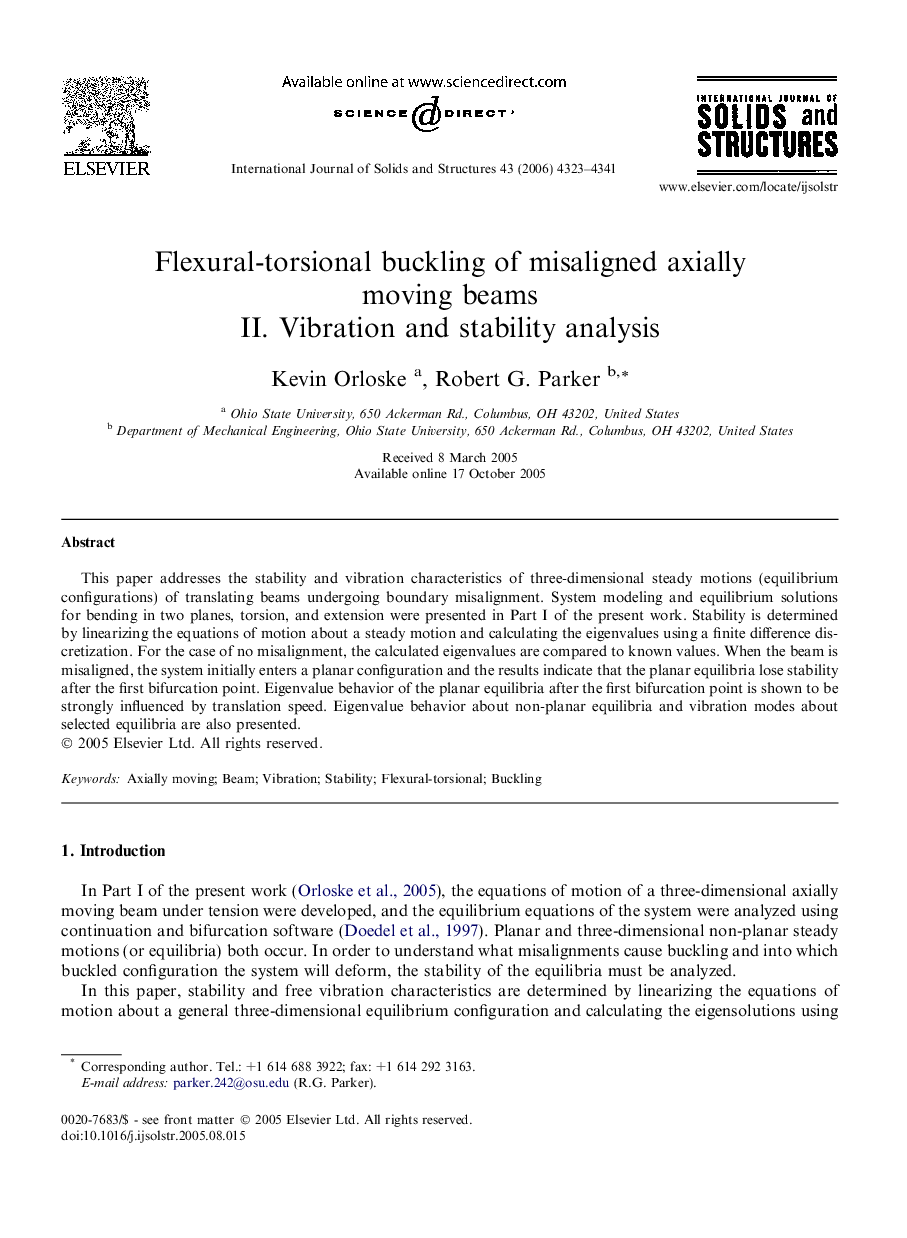| Article ID | Journal | Published Year | Pages | File Type |
|---|---|---|---|---|
| 280555 | International Journal of Solids and Structures | 2006 | 19 Pages |
This paper addresses the stability and vibration characteristics of three-dimensional steady motions (equilibrium configurations) of translating beams undergoing boundary misalignment. System modeling and equilibrium solutions for bending in two planes, torsion, and extension were presented in Part I of the present work. Stability is determined by linearizing the equations of motion about a steady motion and calculating the eigenvalues using a finite difference discretization. For the case of no misalignment, the calculated eigenvalues are compared to known values. When the beam is misaligned, the system initially enters a planar configuration and the results indicate that the planar equilibria lose stability after the first bifurcation point. Eigenvalue behavior of the planar equilibria after the first bifurcation point is shown to be strongly influenced by translation speed. Eigenvalue behavior about non-planar equilibria and vibration modes about selected equilibria are also presented.
